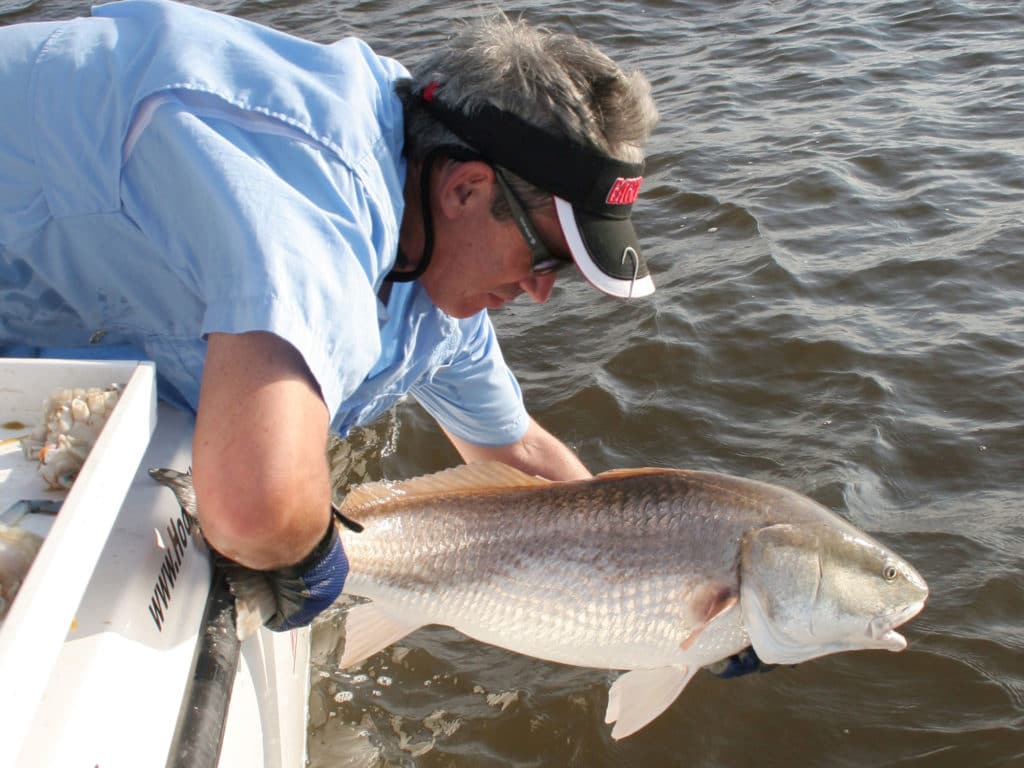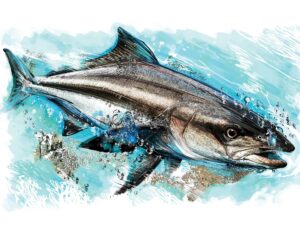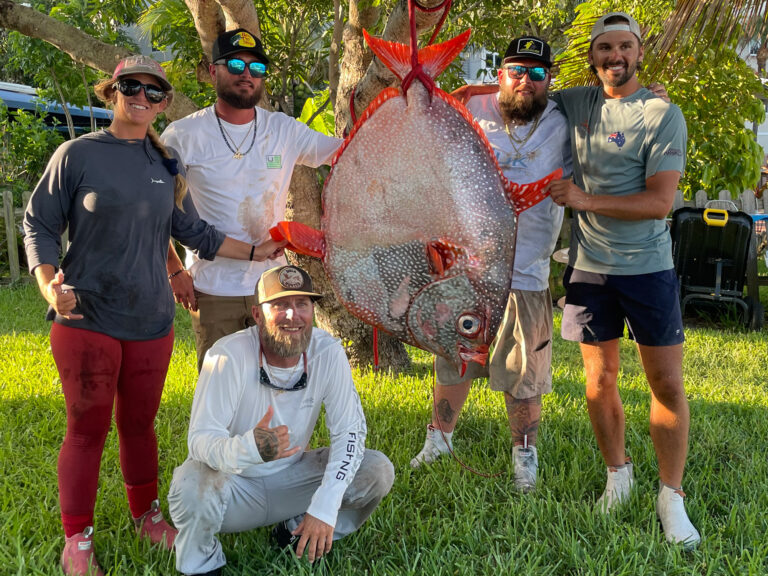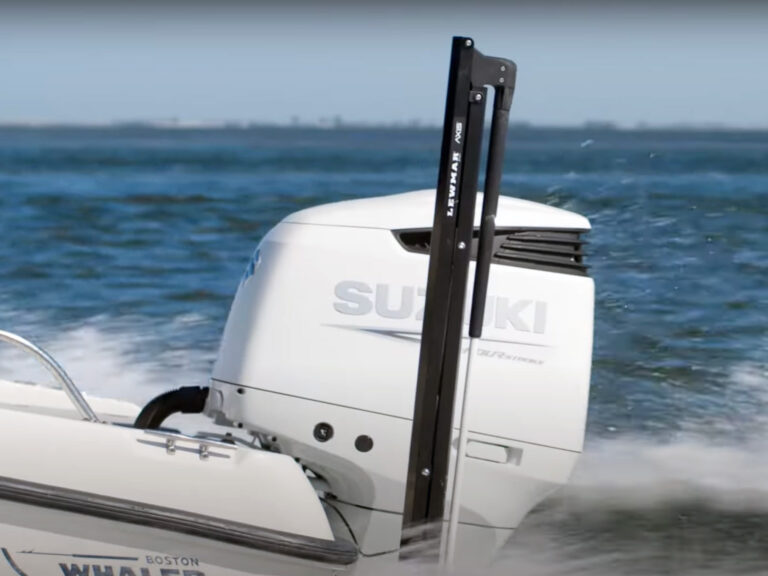
Too many big red drum – bull redfish as they’re called in Dixie – are needlessly killed by fishermen, according to one of Louisiana’s best-known redfish guides and tournament anglers, Mike Frenette, who owns the Redfish Lodge of Louisiana in the town of Venice.
Frenette recorded a 4-minute video on his Facebook post pleading with Louisiana guides and recreational anglers to release the big reds they catch, especially now, as bull redfish are swarming into coastal areas throughout the South to spawn.
Redfish spawn in late summer and early autumn, when huge reds in the 15-to-45-pound class move into inlets, passes and river mouths to propagate. The largest of the reds are big females, and if anglers catch and kill them they are doing a disservice to the fishery, and hurting the future of great red drum fishing for young anglers to experience for years to come, says Frenette.
“This is an important time for our fisheries and I want the word to spread,” says Frenette, 66, and a Louisiana guide for 40 years. “We gotta be doing something better than what’s been doing the past couple years. I’m tired of seeing big bull reds hung up at a marina at the end of a day by guides to just take pictures of the fish for their clients.
“We have a problem, and have to police ourselves better, recreational anglers, too. But I’m speaking as a lodge owner and a guide, to the guides, so we’ll set an example for other fishermen.”
Frenette knows there are plenty of problems for redfish, including overharvesting by purse-seine menhaden netters, oil spills, loss of coastal marshes and other issues. But as a top tournament redfisherman for 20 years working the best of America’s water from the Carolinas to Texas, he knows that keeping bull redfish makes no sense.
“We’re cutting our own throats by killing big brood stock redfish, and for what?” he asks. “They’re not good for eating. It’s the smaller fish that are better on the table. My clients catch big bulls all the time, and we just lift them, shoot a few photos, and carefully release them.
“Pictures of their catch are all most charter clients really want. We’ll catch plenty of smaller fish for them to take home, and those are the better ones at the end of a fork.”
Most southern coastal states have tight regulations governing the take of redfish, with many states not allowing the harvest of any “bull” or redfish over about 30 inches.
In Texas, the limit is three reds, with a take-home slot for fish 20 to 28 inches long.
Mississippi has a three-redfish limit, with an 18-to-30-inch slot. Alabama’s redfish limit is three fish between 16 and 26 inches, allowing for one oversize redfish in the three fish limit.
Florida has a one fish per person limit, with only fish between 18 and 27 inches allowed taken by anglers. No large spawning size reds may be kept in Florida, and there is a maximum “vessel” limit of only four fish per boat, with a guide’s catch not included in that limit.
In Georgia, the state is poised to reduce redfish limits to three fish, with a 14-to-23-inch slot, with no chartering captain or crew participating in catch totals.
In Louisiana the limit is five redfish, only one of which can be longer than 27 inches, making it the most liberal of Deep South states for angler redfish harvest.
There is no top end on that one big Louisiana redfish, which can weigh 30 to 40 pounds, and may be full of ripe eggs during the autumn spawn. And that is the rub Frenette has with some guides and anglers by keeping such fish.
In Louisiana they can take up to five redfish daily, a very generous bag limit, and one not needed to fill a cooler that also includes a big, spawning-size bull redfish.
“They’re our future for redfishing,” he says about big spawners. “The little reds they produce are needed tomorrow by our kids, grandkids and their children, so they all can enjoy the great redfishing we have today. Please, when you catch one, get a photo of it and let it go, that’s all most anglers really want.
“Your kids will thank you.”








